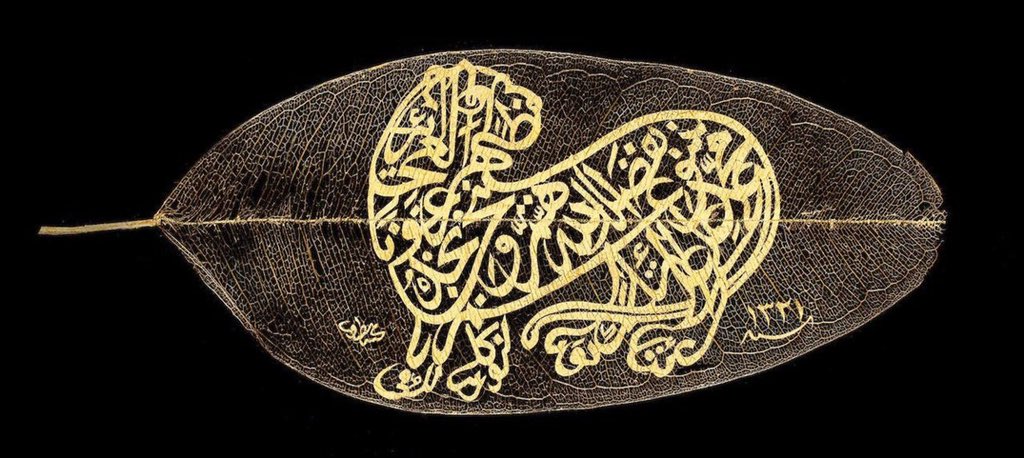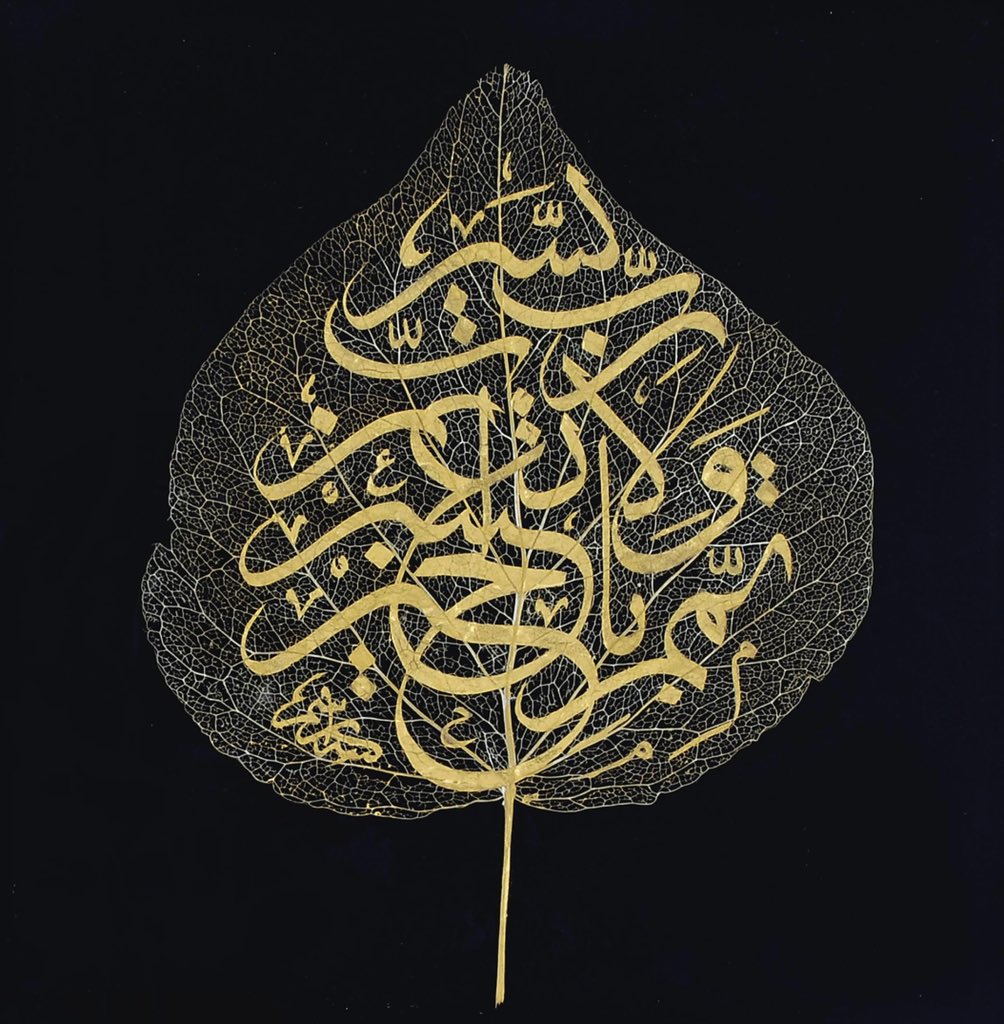Stunningly Elaborate Ottoman Calligraphy Drawn on Dried Leaves

The study of Islamic calligraphy is “almost inexhaustible,” begins German-born Harvard professor Annemarie Schimmel’s Calligraphy and Islamic Culture, “given the various types of Arabic script and the extension of Islamic culture” throughout the Arabian Peninsula, Persia, Africa, and the Ottoman Empire. The first calligraphic script, called Ḥijāzī, allegedly originated in the Hijaz region, birthplace of the Prophet Muhammad himself. Another version called Kūfī, “one of the earliest extant Islamic scripts,” developed and flourished in the “Abbasid Baghdad,” Anchi Hoh writes for the Library of Congress, “a major center of culture and learning during the classical Islamic age.”

Despite the long and venerable history of calligraphy around the Islamic world, there is good reason for the saying that the Qur’an was “revealed in Mecca, recited in Egypt, and written in Istanbul.” The Ottomans refined Arabic calligraphy to its highest degree, bringing the art into a “golden age… unknown since the Abbasid era,” Hoh writes.
“Ottoman calligraphers adopted [master Abbasid calligrapher] Ibn Muqlah’s six styles and elevated them to new peaks of beauty and elegance.” One of the peaks of this refinement can be seen here in these delicately preserved dead leaves covered with golden Arabic script.

This particular application of the art is, needless to say, “difficult and delicate work,” say the notes on one such leaf in Singapore’s Asian Civilisation Museum:
The leaf has to be dried, and the tissue has to be removed slowly so as to leave the skeletal membrane. The stencil of the composition is placed behind the leaf and the gold ink with gum Arabic is applied over it. This art of producing calligraphy of a dried leaf, is one that was practised most widely in Ottoman Turkey during the 19th century. During this period, Ottoman calligraphers were interested in producing compositions which took the shape of fruits, animals and even inanimate objects like ships and houses.
The examples here come from a Twitter thread by Bayt Al Fann, an artist collective “exploring art & culture inspired by Islamic tradition.” There you can find many more elaborate examples and translations and descriptions of the calligraphic script — generally verses from the Qur’an, Hadith prayers, and poetry. Learn much more about Islamic calligraphy in Schimmel’s book; in her Metropolitan Museum of Art bulletin “Islamic Calligraphy” with Barbara Rivolta (free here); and in Hoh’s three-part Library of Congress series here. And find out how Turkish calligraphers like Nick Merdenyan and Saliha Aktaş have reinvented the art in the 21st century….

via MetaFilter
Related Content:
Free: Download Thousands of Ottoman-Era Photographs That Have Been Digitized and Put Online
Josh Jones is a writer and musician based in Durham, NC. Follow him at @jdmagness
from Art Life Culture https://ift.tt/ydzskHI
via IFTTT

Comments
Post a Comment